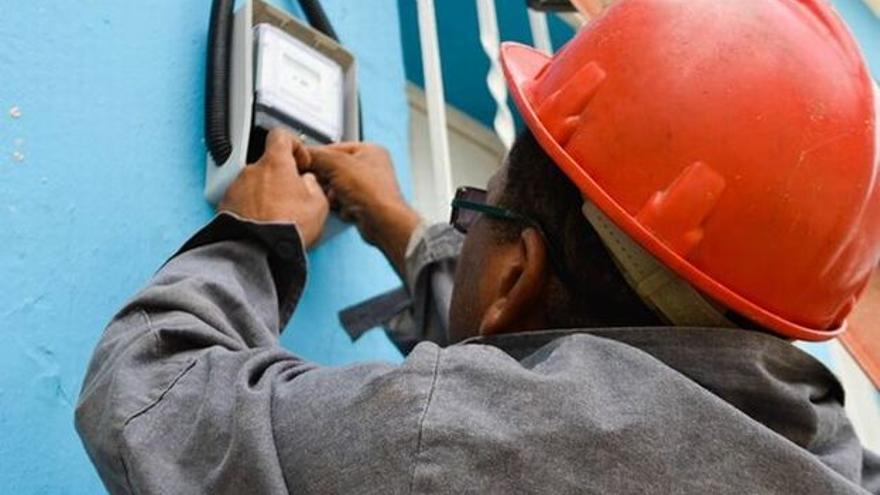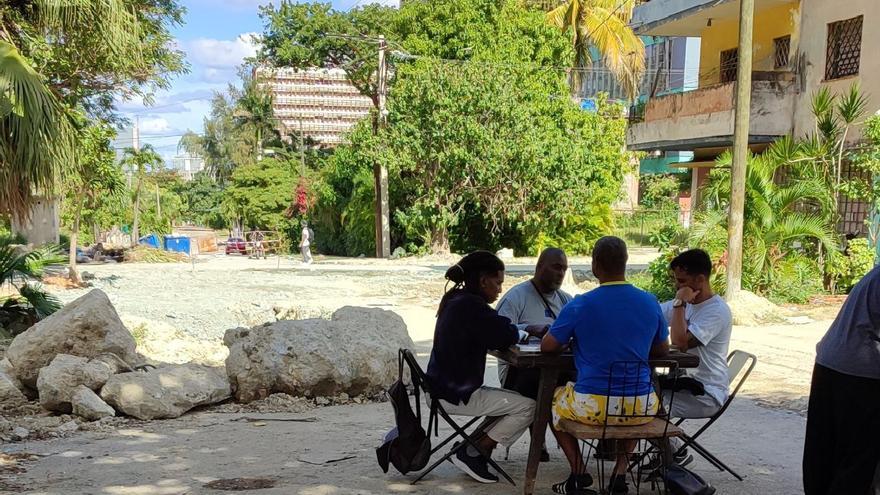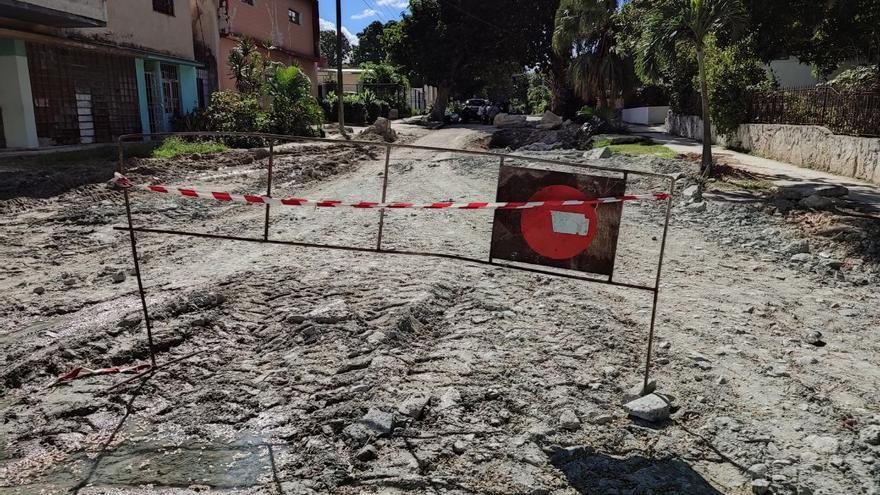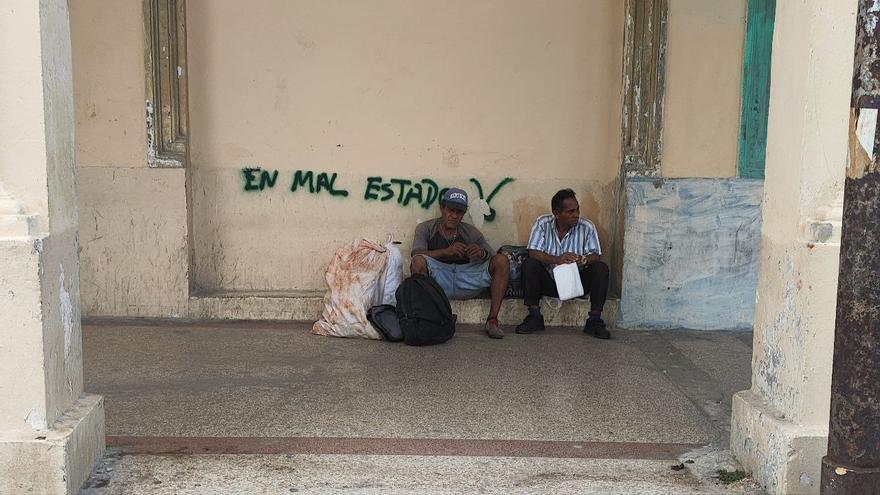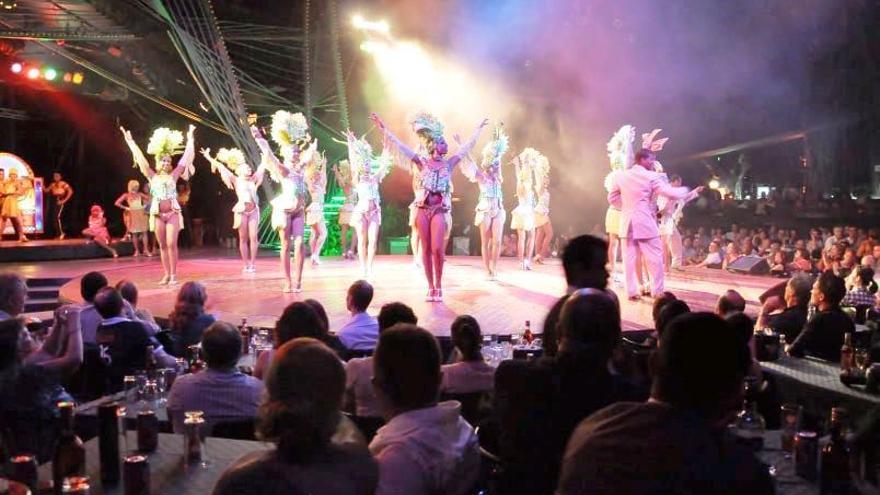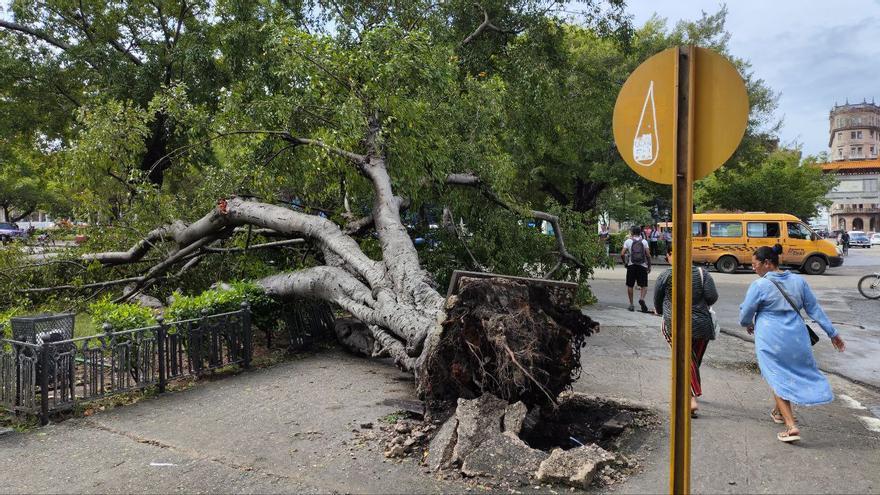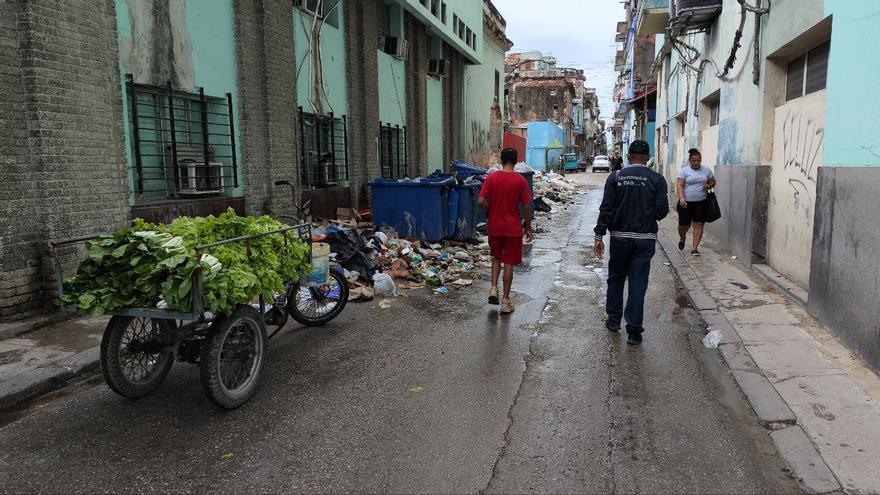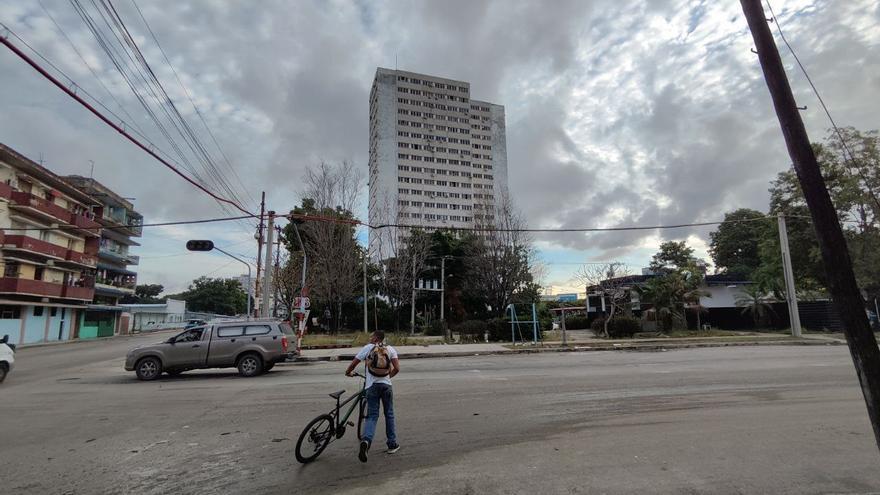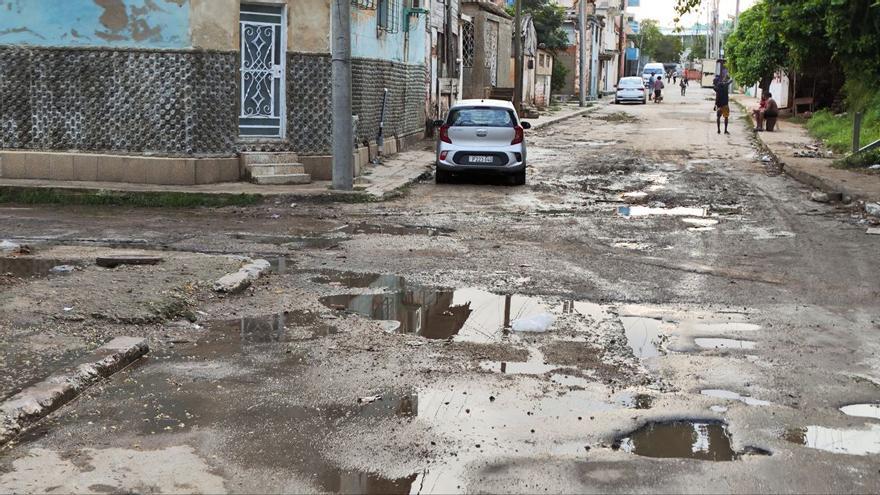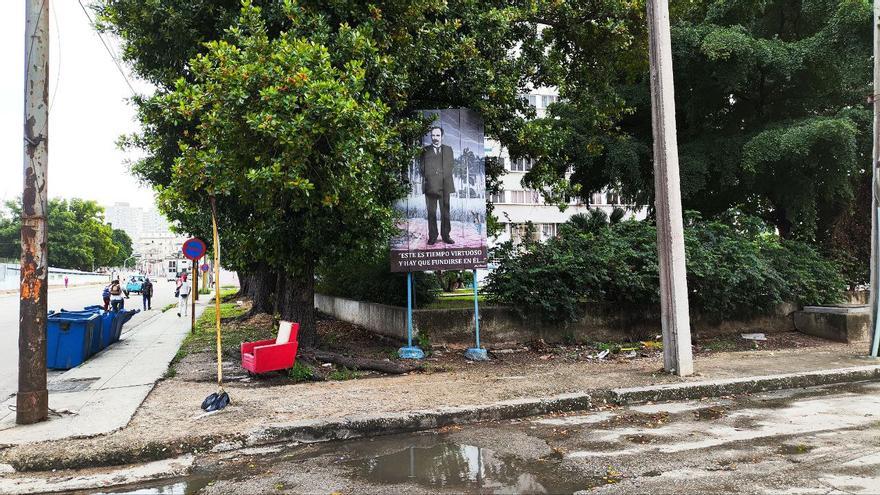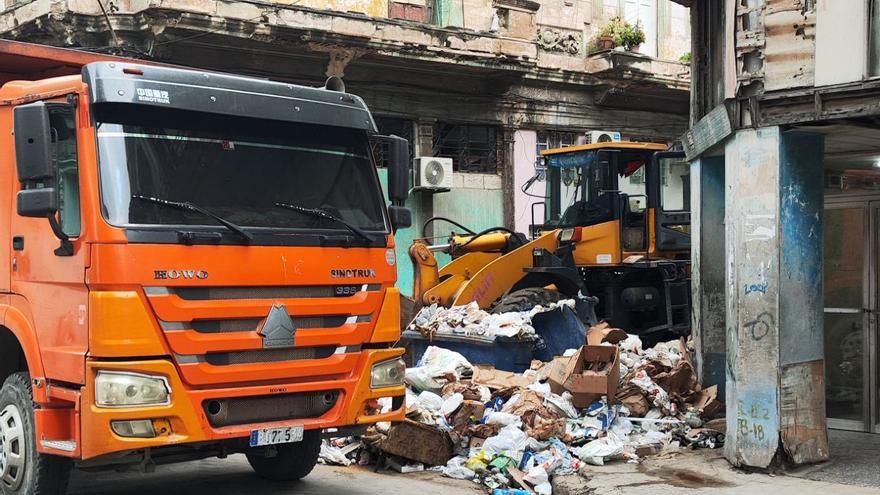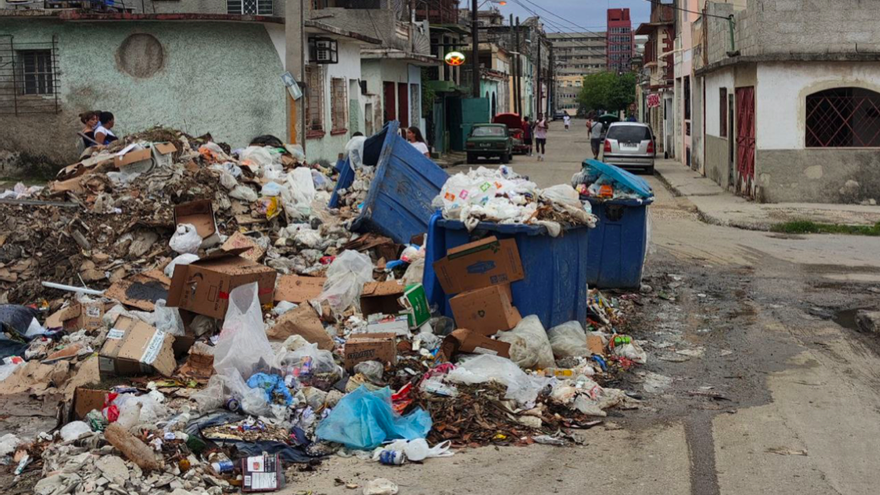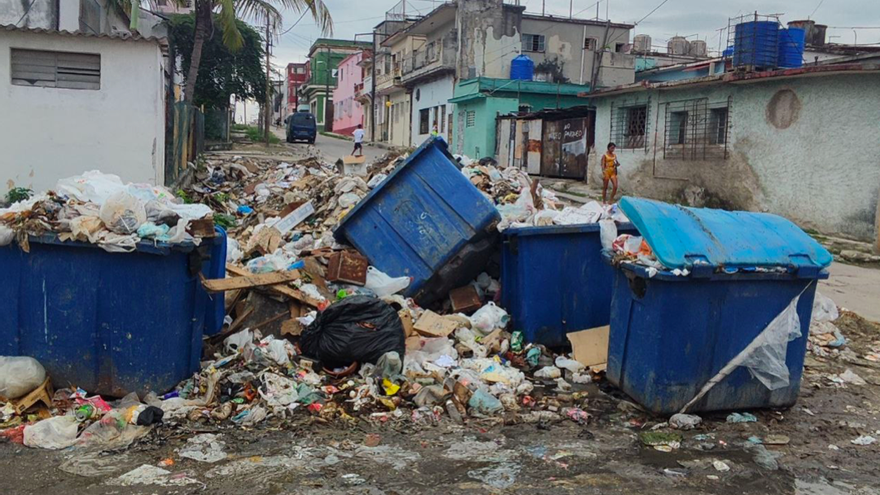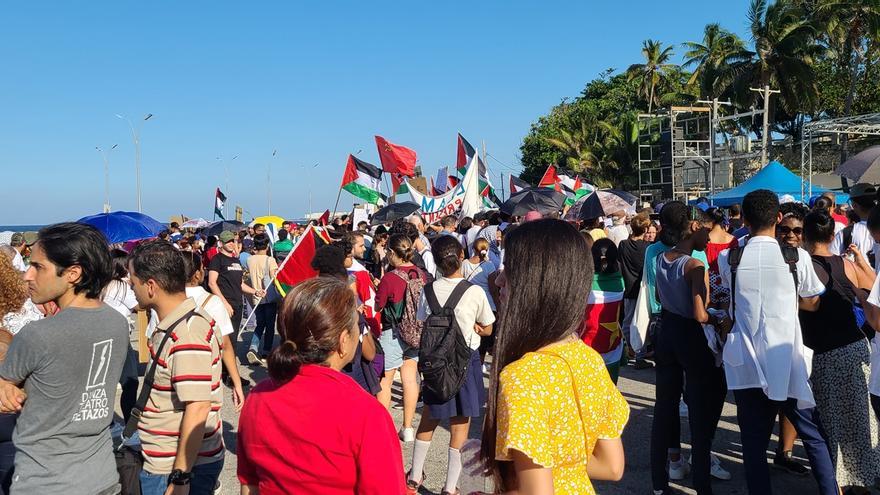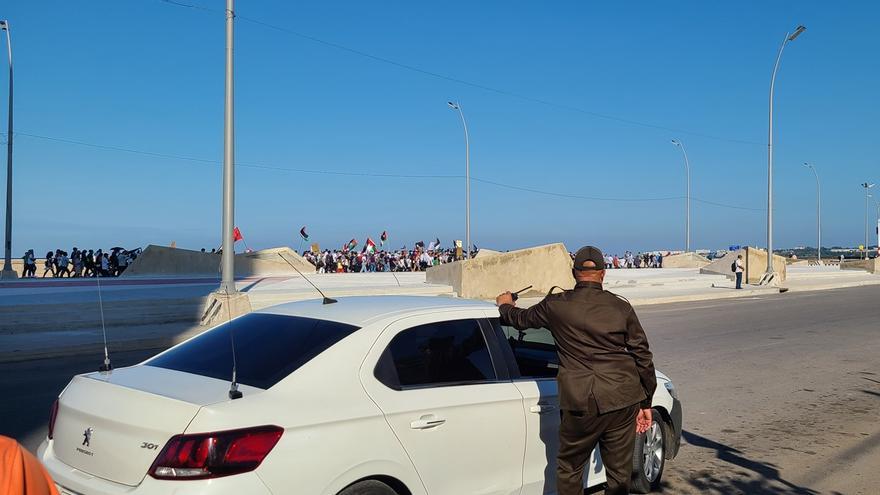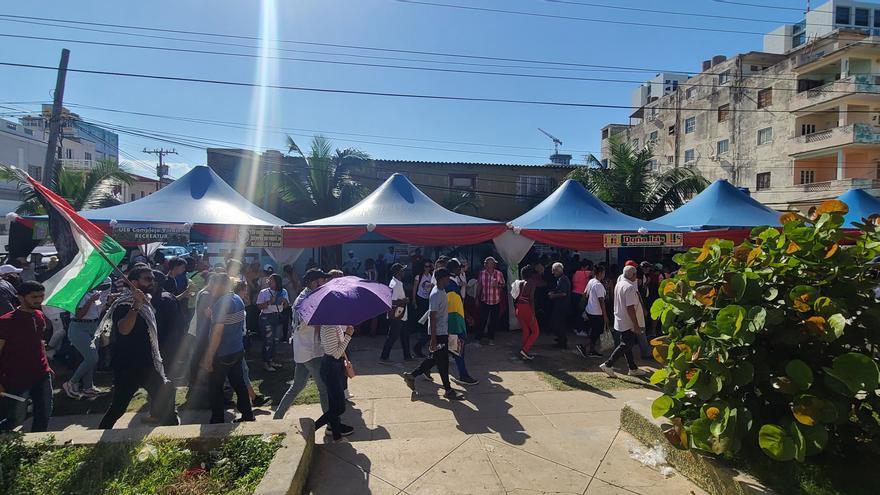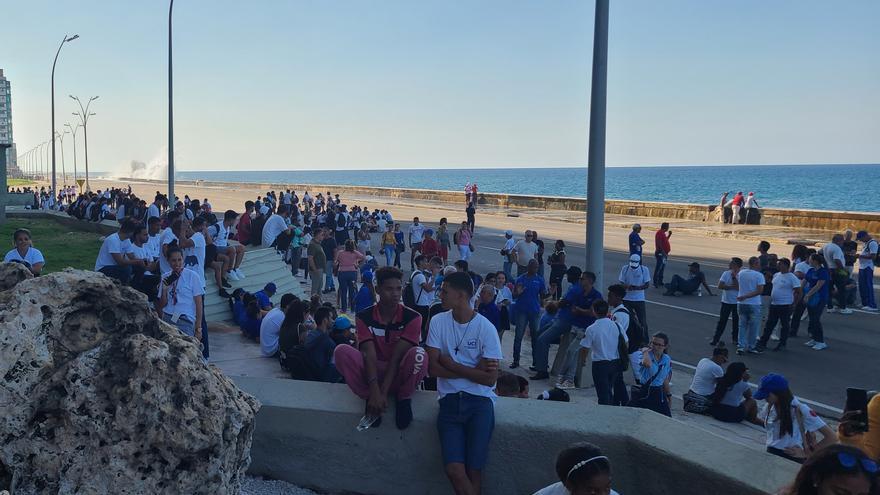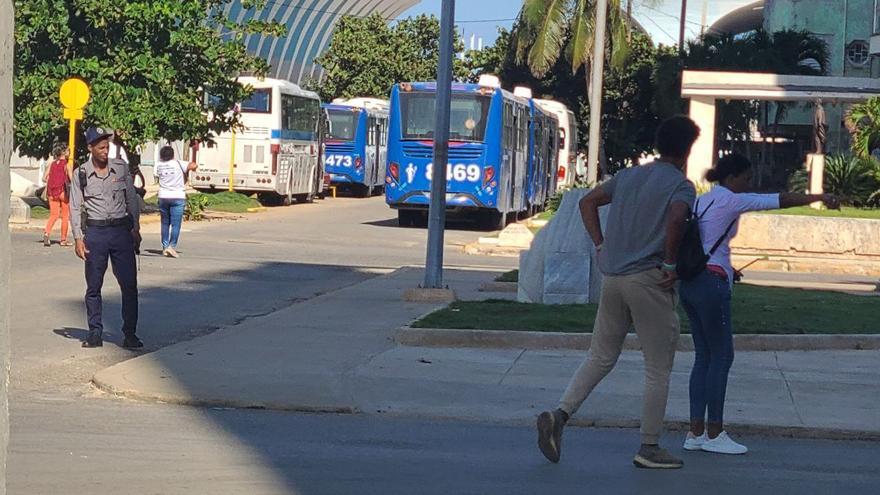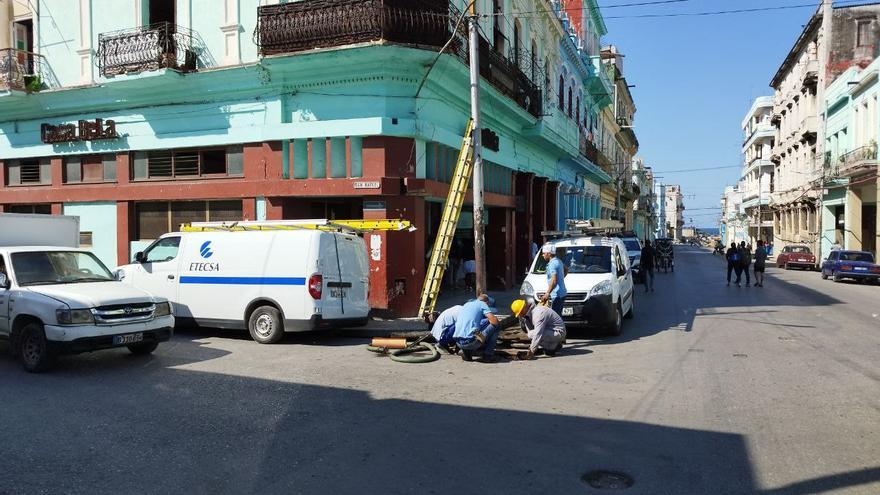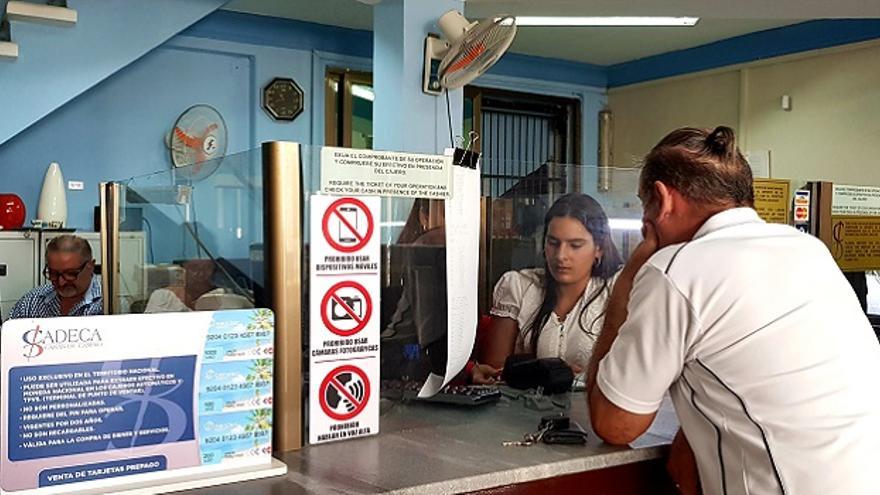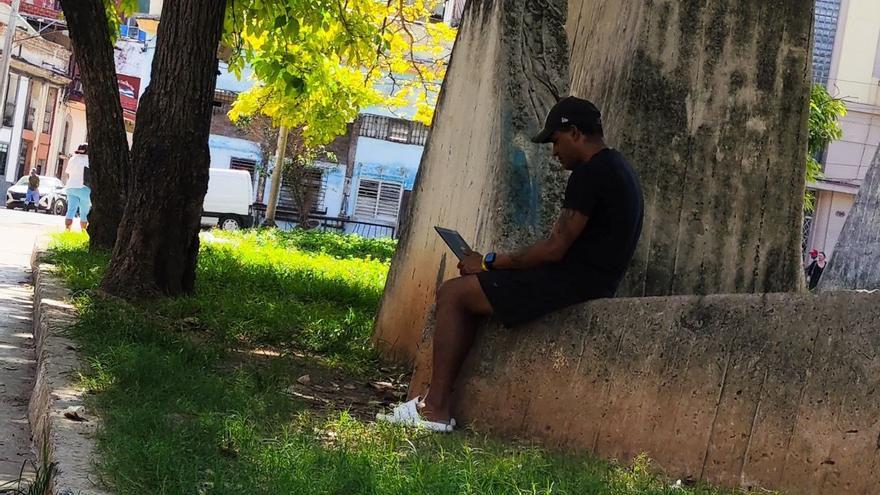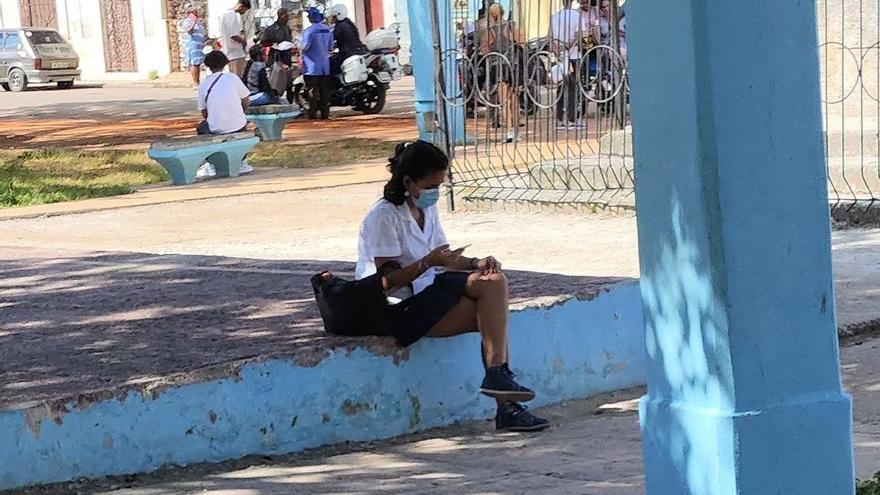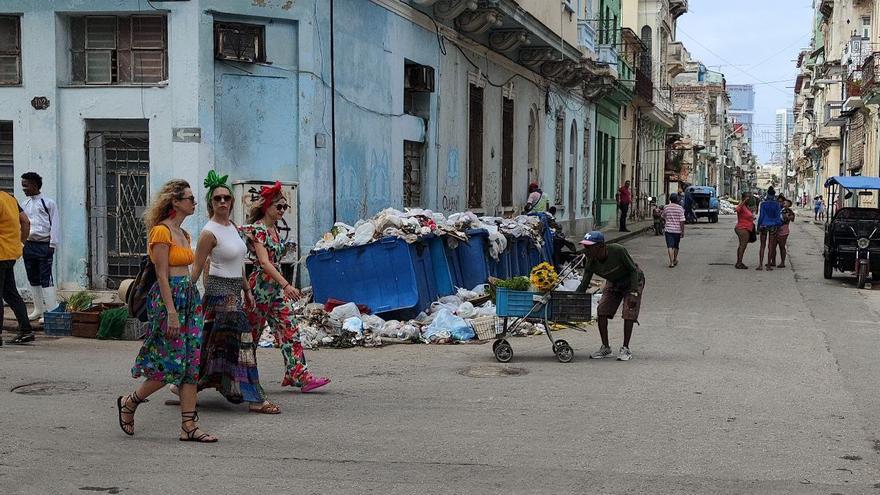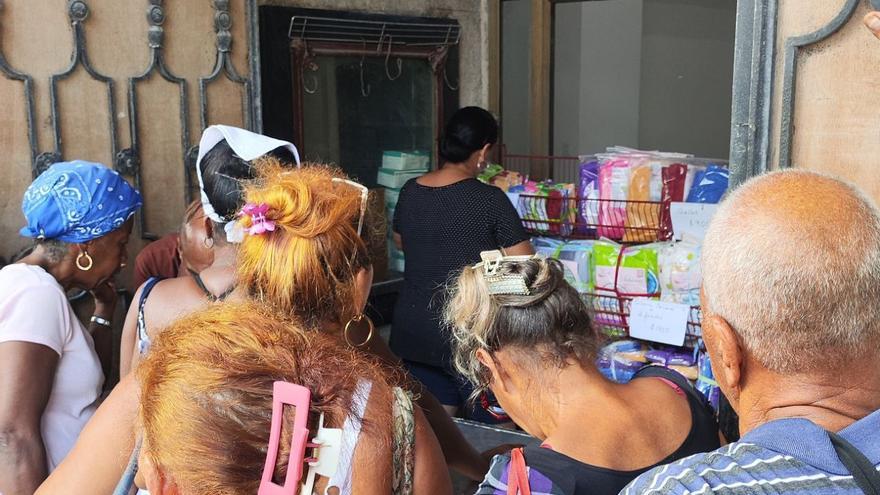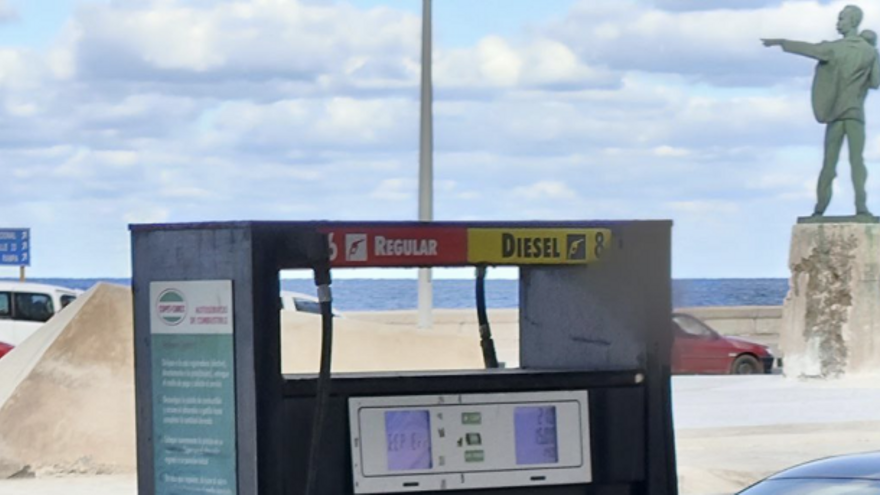
![]() 14ymedio, Natalia López Moya, Havana, 31 January 2024 — It started as a murmur. Some drivers who were waiting with their vehicles in line to buy fuel at the El Tángana gas station in Havana shared the news. “They just said it on the news,” said a driver with shortness of breath and an almost purple face. “They backtracked on the new prices,” he concluded, before the stunned gaze of the others who had been in line for days.
14ymedio, Natalia López Moya, Havana, 31 January 2024 — It started as a murmur. Some drivers who were waiting with their vehicles in line to buy fuel at the El Tángana gas station in Havana shared the news. “They just said it on the news,” said a driver with shortness of breath and an almost purple face. “They backtracked on the new prices,” he concluded, before the stunned gaze of the others who had been in line for days.
A few hours before the new rates came into effect, up to five times higher than the previous rates for the sale of gasoline and diesel in Cuba, the authorities have canceled the measure. The reason for the step back has been explained on national television by Mildred Granadillo de la Torre, First Deputy Minister of Economy and Planning. The official has justified the slowdown due to the occurrence of “a cybersecurity incident in the computer systems for the marketing of fuels whose origin has been identified as a virus from abroad.”
Life stopped in each Cuban service center starting a little after two in the afternoon this Wednesday, when the announcement was broadcast on national television. In other times, it would have taken hours for those who had not been in front of the television screen to find out, but, for better or worse, the Internet has shortened the time and has accelerated reactions in today’s Cuba. A few minutes after it was announced before the news microphones, the effect of the official rectification was noticeable at the gas stations. continue reading
“I spent a very cold night in this line because I knew that starting February 1, fuel would cost more. Right now I feel like they’ve laughed at me, I don’t see this as a relief, this is a mockery”
“I spent a very cold night in this line because I knew that starting February 1, fuel would cost more. Right now I feel like they are laughing at me, I don’t see this as a relief, this is a joke,” said another driver of a Lada car who had already even “made friends” with the nearby drivers of a Polski Fiat and an old American vehicle from the beginning of the 20th century. In the face of the crisis, there is no better or worse car, what counts is whether or not the owner has access to the currency, a carte blanche that, in principle soon, will facilitate access to the precious product.
And it is precisely dollars that will begin to make the difference when the new prices are implemented, postponed by the alleged hacking of the networks of the military conglomerate Cimex, which manages the gas stations on the Island. The alleged computer attack has come to add doubt to doubt and unease to a reality that was already quite immersed in unrest.
“What’s wrong with these people?” asked the driver of a Moskvitch, who this Wednesday found out about the “step back” after more than 36 hours in line to refuel in El Tángana. Behind him, the statue of José Martí, which once served for the most recalcitrant official events held in the Anti-Imperialist Platform, was seen in a peculiar and little-known foreshortening.
The sculpture, seen from the gasoline pumps, no longer showed its haughty profile this Wednesday, carrying its small son and pointing an accusing finger at the United States Embassy in Havana. Instead, it seemed timid, humble, and more down-to-earth. It summed up the feelings of frustrated drivers who did not know whether to breathe a sigh of relief or fear the worst when the date of the new rates for gasoline and diesel changed.
“Retreat!” joked on driver, paraphrasing a popular Cuban cartoon. “The Apostle* has said it: go back, we must go back,” and the long and inflexible arm of the figure seemed to agree with him. In the foreground, the screens of the fuel pumps marked a brief message: “Err” for “error” or perhaps for “eradicating” such a disastrous measure, just before it was applied.
*Translator’s note: Cubans identify José Martí [1853-1895] as the “Apostle of Cuban Independence” and he is commonly referred to simply as “the Apostle.”
____________
COLLABORATE WITH OUR WORK: The 14ymedio team is committed to practicing serious journalism that reflects Cuba’s reality in all its depth. Thank you for joining us on this long journey. We invite you to continue supporting us by becoming a member of 14ymedio now. Together we can continue transforming journalism in Cuba.

